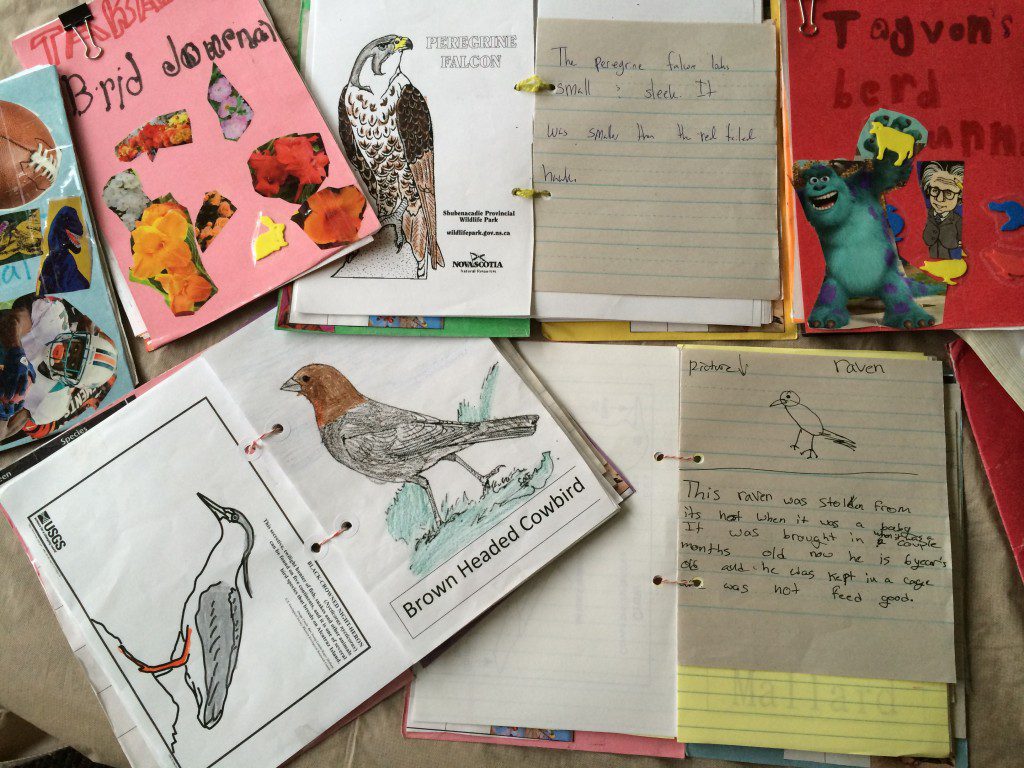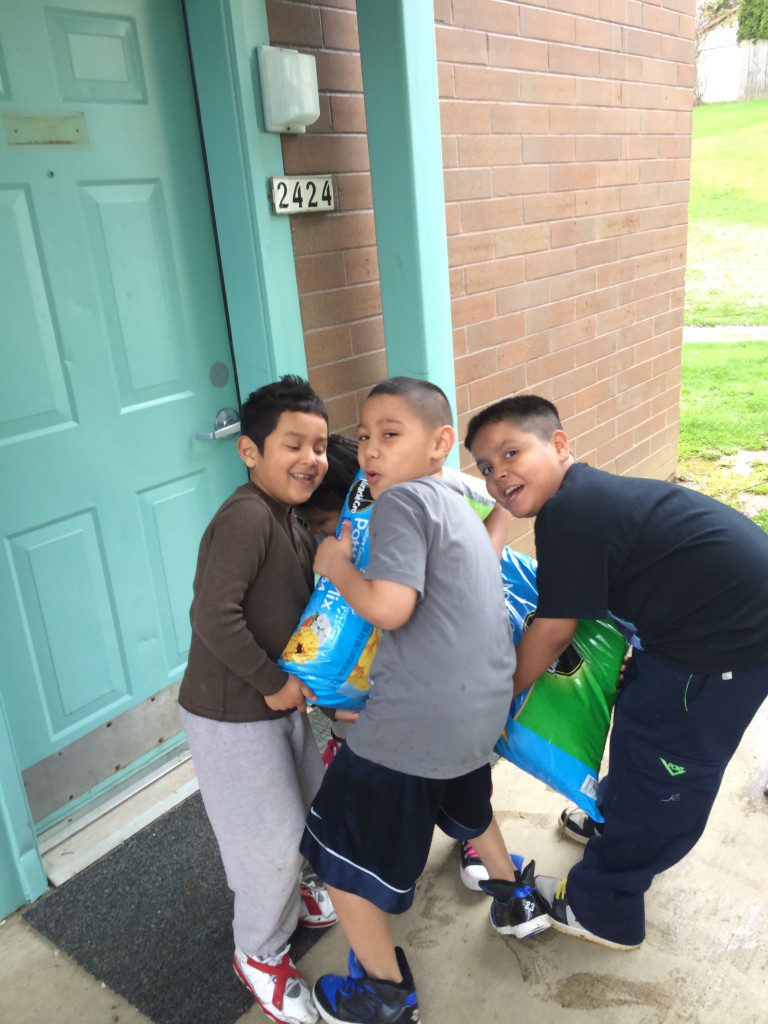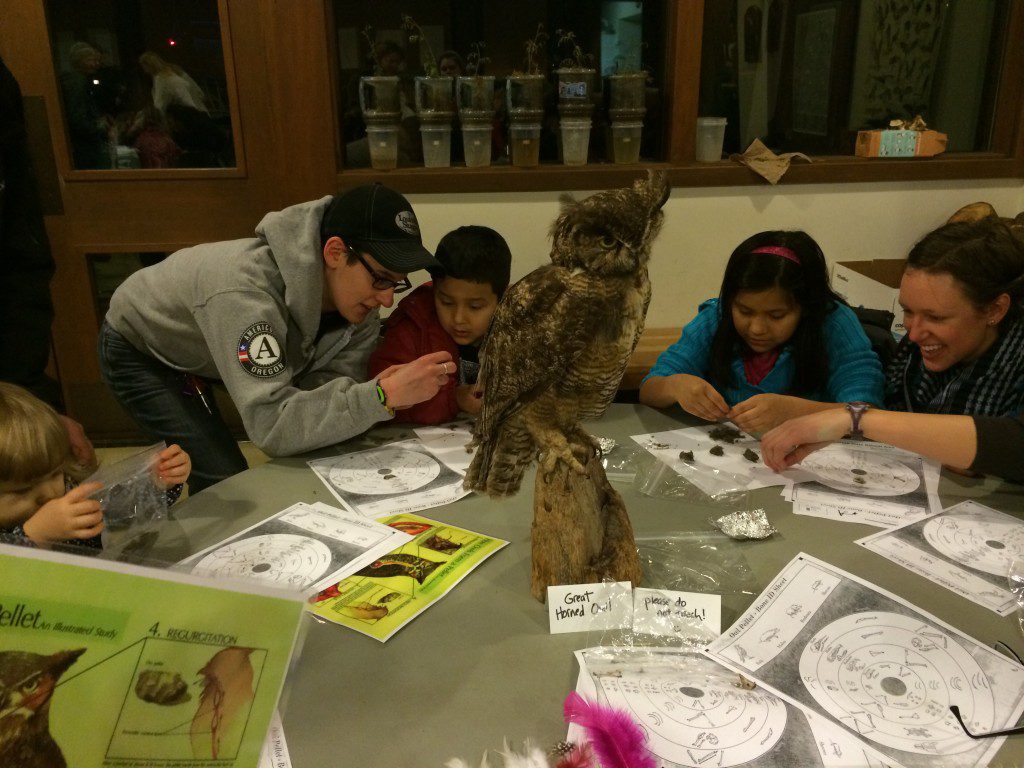Kids at Home in the Wild
February 15th-August 31st, 2014 | Portland, OR, United States
Dekum Court, a residential complex in Portland, Oregon, is constructed in the shape of a U. In the center of the apartments are two playgrounds with a field and some young trees in between. The Kids at Home in the Wild group, as one of Oregon’s Volunteers of America projects, hopes to help increase the neighborhood youths’ sense of ownership in the community by further greening the open area in the middle of Dekum Court and making it a particularly bird-friendly place.

The project began on February 15th when participating children and teens took an initial bird count of the project space in conjunction with the Great Backyard Bird Count. They had reviewed the types of birds that live in Oregon and how to identify them by playing a modified head bands game, where the card on each person’s head was one of the birds that would be looking for. Each participant had a handout with pictures of all of the birds and their names on it. The purpose of the game was to inspire the youth to identify key features of each bird on their own by coming up with descriptive questions.
On February 27th, working with Portland Youth Builders and the Portland Rebuilding Center, teenagers built their own birdhouses that will be placed in the yard at the next event in March. The wood was repurposed from the Portland Rebuilding Center, and each teen had the opportunity to tour the Rebuilding Center to find a way to use a donated item to make their birdhouse unique. In early March, Kids at Home in the Wild held an open community event where participants created bird feeders by stringing popcorn, collecting and creating pine cone feeders, making bird pudding, and building many other types of bird feeders from recycled items like panty hose and slinkies.

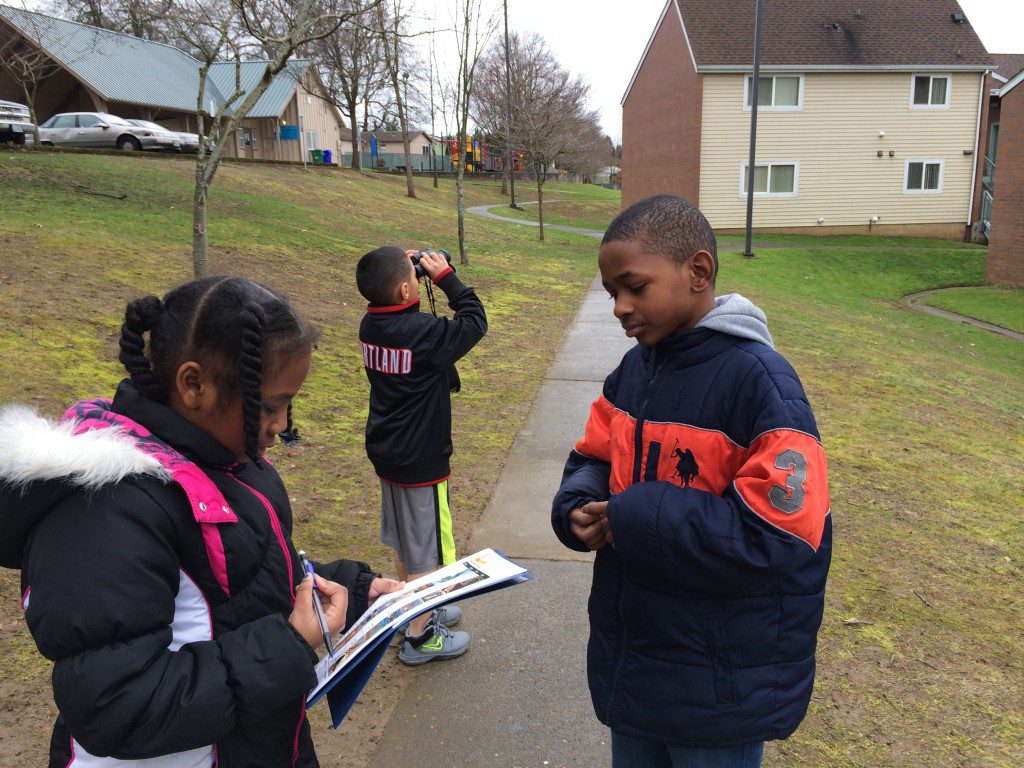
Starting in early April, the group plans on putting two garden beds in place along the side of the community room, and planting them with bird-friendly plants that can tolerate Portland winters. The teens will have an opportunity to design the two beds, and will paint and build the beds together with younger participants to encourage more ownership from everyone in the program. In late May, they’ll conduct another bird count to compare their numbers to the first bird count and asses whether their efforts to create a bird haven have had any impact. Later on in the summer, Kids at Home in the Wild has a bunch of other great projects planned that we look forward to keeping you updated on!
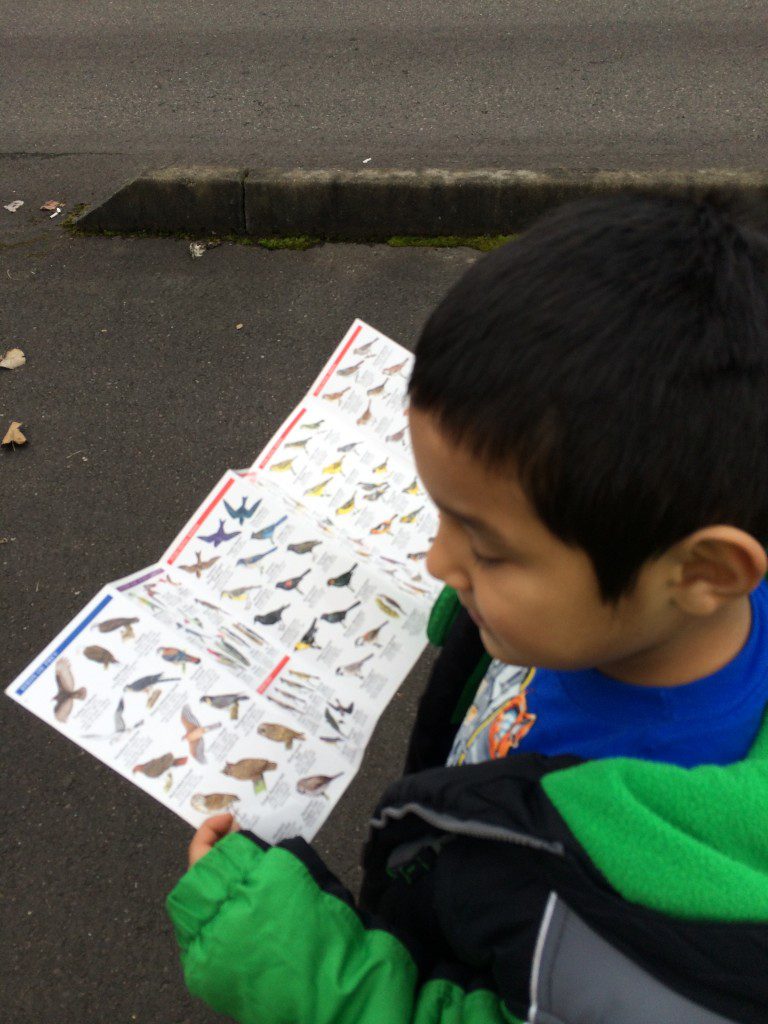
Project leader Madison Weakley wrote us, “This young generation is the most electronically intertwined yet. As this group continues to grow, their curiosity with the environment is getting sealed off and starved. A community project like this at Dekum could break that isolation. The center of the apartment complex is a space for engagement, and community celebration. There are so many relationships, skills, and positive characteristics waiting to be developed. An Urban Birds project with goals to utilize this space will serve to take advantage of all the potential that is waiting and wanting.”
